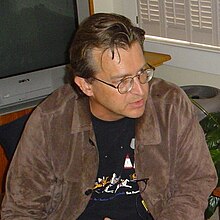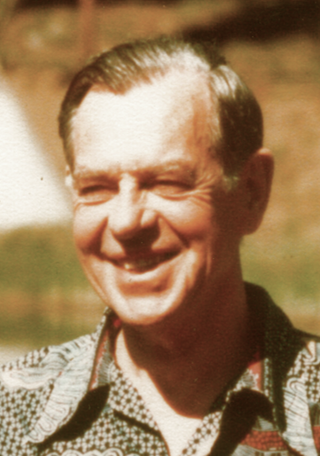
Joseph John Campbell was an American writer. He was a professor of literature at Sarah Lawrence College who worked in comparative mythology and comparative religion. His work covers many aspects of the human experience. Campbell's best-known work is his book The Hero with a Thousand Faces (1949), in which he discusses his theory of the journey of the archetypal hero shared by world mythologies, termed the monomyth.

The Hero with a Thousand Faces is a work of comparative mythology by Joseph Campbell, in which the author discusses his theory of the mythological structure of the journey of the archetypal hero found in world myths.

Marion Jean Woodman was a Canadian mythopoeic author, poet, analytical psychologist and women's movement figure. She wrote and spoke extensively about the dream theories of Carl Jung. Her works include Addiction to Perfection, The Pregnant Virgin and Bone: Dying into Life.

Peace Pilgrim, born Mildred Lisette Norman, was an American spiritual teacher, mystic, pacifist, vegetarian activist and peace activist. In 1952, she became the first woman to walk the entire length of the Appalachian Trail in one season. Starting on January 1, 1953, in Pasadena, California, she adopted the name "Peace Pilgrim" and walked across the United States for 28 years, speaking with others about peace. She was on her seventh cross-country journey when she died.
Caroline Myss is an American author of 10 books and many audio recordings about mysticism and wellness. She is most well known for publishing Anatomy of the Spirit (1996). She also co-published The Creation of Health with Dr C Norman Shealy MD - ex Harvard professor of neurology. Her most recent book, Archetypes: Who Are You? was published in 2013. Myss describes herself as a medical intuitive and a mystic.

In narratology and comparative mythology, the hero's journey, also known as the monomyth, is the common template of stories that involve a hero who goes on an adventure, is victorious in a decisive crisis, and comes home changed or transformed.
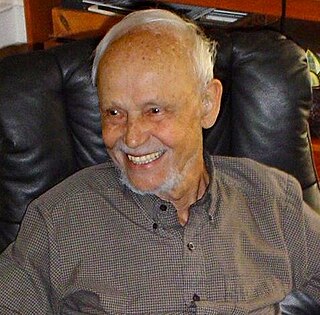
Huston Cummings Smith was a scholar of religious studies in the United States, He authored at least thirteen books on world's religions and philosophy, and his book about comparative religion, The World's Religions sold over three million copies as of 2017.

Josephine Louise Miles was an American poet and literary critic; the first woman tenured in the English department at the University of California, Berkeley. She wrote over a dozen books of poetry and several works of criticism. She was a foundational scholar of quantitative and computational methods, and is considered a pioneer of the field of digital humanities. Benjamin H. Lehman and Josephine Miles' interdepartmental "Prose Improvement Project" was the basis for James Gray's Bay Area Writing Project, which later became the National Writing Project. The "Prose Improvement Project" was one of the first efforts at creating a writing across the curriculum program.
Elizabeth Fishel is a journalist and author. In 2013, Fishel published her fifth book, coauthored with Jeffrey Arnett, Getting To 30: A Parent's Guide to the 20-Something Years In 2000, Fishel published a book profiling 10 of her classmates from the class of 1968 at Brearley School titled Reunion: The Girls We Used to Be, the Women We Became. Her book I Swore I'd Never Do That! was awarded "Best Parenting Book" by Parent's Choice Award in 1991. Earlier books include Sisters and The Men In Our Lives (1985).

Trina Robbins is an American cartoonist. She was an early participant in the underground comix movement, and one of the first female artists in that movement. She is a member of the Will Eisner Hall of Fame.
The Buddhist Peace Fellowship (BPF) is a nonsectarian international network of engaged Buddhists participating in various forms of non-violent social activism and environmentalism. The non-profit BPF is an affiliate of the international Fellowship of Reconciliation working toward global disarmament and peace, helping individuals suffering under governmental tyranny in places such as Burma, Bangladesh, Tibet and Vietnam. Headquartered in Oakland, California, BPF was incorporated in 1978 in Hawaii by Robert Baker Aitken, his wife Anne Hopkins Aitken, Nelson Foster, Ryo Imamura and others. Shortly after other notable individuals joined, including Gary Snyder, Alfred Bloom, Joanna Macy, and Jack Kornfield. Generally speaking, the BPF has a tendency to approach social issues from a left-wing perspective and, while the fellowship is nonsectarian, the majority of its members are practitioners of Zen Buddhism.
BPF's work includes:
- Sparking conversation at the intersection of Buddhism and social justice;
- Training Buddhist political activists;
- Mobilizing people to action from a Buddhist perspective;
- Building a network of radical Buddhist activists.

Ten Speed Press is a publishing house founded in Berkeley, California, in 1971 by Phil Wood. It was bought by Random House in February 2009 and became part of their Crown Publishing Group division.

Rapa Nui mythology, also known as Pascuense mythology or Easter Island mythology, refers to the native myths, legends, and beliefs of the Rapa Nui people of Easter Island in the south eastern Pacific Ocean.
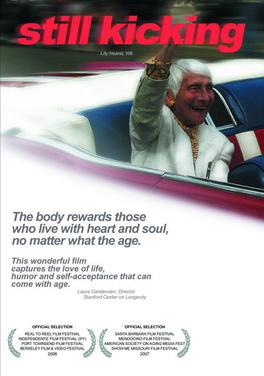
Still Kicking: Six Artistic Women of Project Arts & Longevity is a 2006 32-minute documentary film by Pacific Grove filmmaker Greg Young, featuring six Bay Area women role models over 85 years old who remained artistically active. The catalyst for Young's film was Amy Gorman and Frances Kandl's Project Arts & Longevity through which they were exploring the link between longevity and artistic vitality. Along with the film the joint project resulted in a book entitled Aging Artfully.

Hagop Sandaldjian (1931–1990) was an Egyptian-born Armenian American musician and microminiature sculptor, best known for his tiny art pieces, currently displayed at the Museum of Jurassic Technology in Los Angeles, California. Sandaldjian's creations included a carving of Mount Ararat on a grain of rice; a crucifix in which a minute golden figure of Jesus hangs upon a cross made from a bisected strand of Sandaldjian's own hair; and recreations of Disney figures or historical figures presented in the eye or on the tip of a needle.
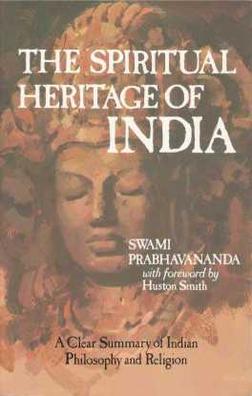
The Spiritual Heritage of India is a book written by Swami Prabhavananda (1893–1976), founder and head of the Vedanta Society of Southern California from 1930 until his death. Originally published in 1962 by Doubleday, the book has been republished with the same title in several later editions, including hardcover, paperback, and sound recording. It has been reviewed in magazines and professional journals. A foreword by Huston Smith was first included in a 1979 edition.
Maria Bartola was a 16th-century Aztec woman and is referred to as the first historian of Mexico.

Orunamamu was an American/Canadian professional storyteller, raconteur and griot. Her peripatetic storytelling led her on extensive, demanding and often impromptu journeys across the United States including Alaska, overseas to the United Kingdom and Egypt and finally to Canada. She is included in a number of books, journals, articles and two documentaries. Her performance medium was the spoken voice in performances to audiences. For Orunamamu storytelling became her cause as well as her art form, because "[s]torytelling demonstrates the humanity in every culture." Orunamamu died in Calgary, Alberta on 4 September 2014 at the age of 93. She was booked to perform at the Calgary Spoken Word Festival in the summer of 2014. Orunamamu has been the subject of countless portraits over many decades and in many countries, including photographers such as Arthur Koch (Oakland), Kenneth Locke (Calgary) and Jim Hair. Many of these are shared through social media.
Mary Fabilli was an American poet and illustrator who for many years made her living as an art teacher and curator at the Oakland Museum in Oakland, California. She was for a time married to poet William Everson and was close friends with poet Robert Duncan, both associated with the Berkeley Renaissance and the San Francisco Renaissance in nearby San Francisco. Fabilli's published work centered on her personal experiences, particularly those related to her Italian heritage and her Roman Catholic faith, and she did not consider herself to be a Beat poet.
Joanna McClure is an American poet associated with the writers of the San Francisco Renaissance and the Beat Generation. According to author Brenda Knight, McClure wrote prolifically from the 1950s onward, filling dozens of artist's notebooks with poems and producing "as much writing as [Jack] Kerouac did, though she kept much of hers private."
